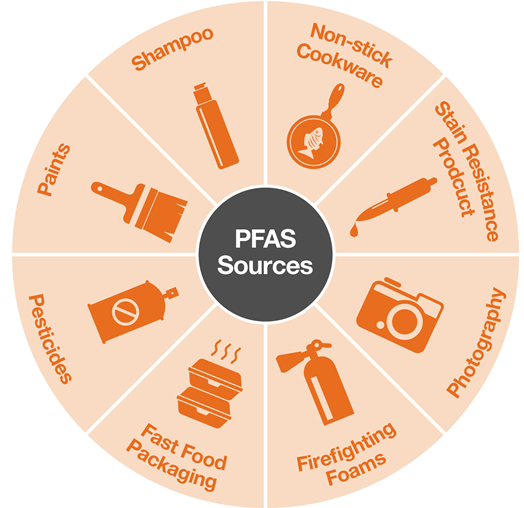To advance critical progress on securing clean air, safe food, and clean drinking water:
EPA is launching a robust, new PFAS Roadmap that will guide the agency’s current and planned activities in 2021-2024 to research, restrict, and remediate harmful PFAS. The roadmap includes regulatory and administrative actions and enforcement approaches that EPA intends to take, using existing authorities, to comprehensively address PFAS throughout the environment. Actions include a new national testing strategy to accelerate research and regulatory development, a proposal to designate certain PFAS as hazardous substances under the Comprehensive Environmental Response, Compensation, and Liability Act (CERCLA), and actions to broaden and accelerate the cleanup of PFAS.
The roadmap is the product of the EPA PFAS Council, which Administrator Regan established shortly after being confirmed.
EPA’s new roadmap builds on actions that EPA has already taken this year to confront PFAS, including updating a PFBS toxicity assessment that had been marked by error and improper, non-scientific influence and issuing a new assessment backed by career scientists.
EPA has also begun to develop a national primary drinking water regulation, improve understanding of 29 PFAS chemicals in the nation’s water systems, and take actions to stop polluters from discharging PFAS into America’s waterways and wastewater systems.
The Strategic Roadmap (“Roadmap”) has a three-pronged approach to address PFAS issues in the environment:
- research;
- restriction; and
- remediation.
Under the research prong, the EPA intends to invest in research, development, and innovation to increase understanding regarding the different types of PFAS, effective interventions for contamination, and their effects on human health and the environment. Under the restriction prong, the EPA aims to prevent PFAS from entering the environment by regulating production and requiring more in-depth reporting. This includes placing the responsibility for limiting exposures and addressing hazards of PFAS on manufacturers, processors, distributors, and importers. Finally, under the remediation prong, the EPA aims to broaden and accelerate the cleanup of PFAS contamination.
Consider the Lifecycle of PFAS
EPA will account for the full lifecycle of PFAS, their unique properties, the ubiquity of their uses, and the multiple pathways for exposure. PFAS are a group of synthetic chemicals that continue to be released into the environment throughout the lifecycle of manufacturing, processing, distribution in commerce, use, and disposal. Each action in this cycle creates environmental contamination and human and ecological exposure.
Get Upstream of the Problem
EPA will bring deeper focus to preventing PFAS from entering the environment in the first place—a foundational step to reducing the exposure and potential risks of future PFAS contamination.
Hold Polluters Accountable
EPA will seek to hold polluters and other responsible parties accountable for their actions and for PFAS remediation efforts by ensuring that they assume responsibility for remediation efforts and prevent any future releases.
Ensure Science-Based Decision-Making
EPA will invest in scientific research to fill gaps in understanding of PFAS, to identify which additional PFAS may pose human health and ecological risks at which exposure levels, and to develop methods to test, measure, remove, and destroy them.
Prioritize Protection of Disadvantaged Communities
When taking action on PFAS, EPA will ensure that disadvantaged communities have equitable access to solutions. EPA will also collect more data and develop new methodologies to understand PFAS exposure pathways in disadvantaged communities; to what extent PFAS pollution contributes to the cumulative burden of exposures from multiple sources in these communities; and how non-environmental stressors, such as systemic socioeconomic disparities, can exacerbate the impacts of pollution exposure and vice versa.
The Spencer-SHE engineering team provides expertise for raw material and product assessments to identify, evaluate, and quantify potential risks related to the implementation of the EPA’s new PFAS Strategic Roadmap.
Spencer-SHE has been providing Safety, Health, and Environmental Compliance Guidance since 1980, offering clients cost-effective, turn-key solutions. Contact us here to help you to develop and maintain a safe and healthy workforce.
Sources:
https://www.epa.gov/system/files/documents/2021-10/pfas-roadmap_final-508.pdf

